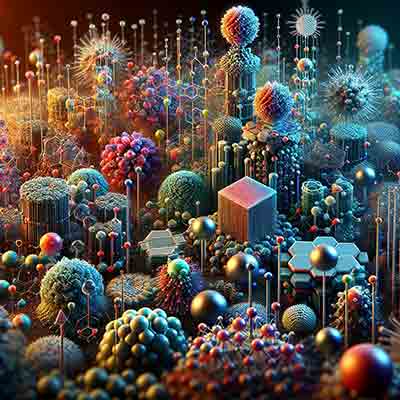Substrates for Nanomaterial Research
150mm Silicon Wafers Used For Nanomaterials Research
A nanostructures researcher requested a quote for the following:
Please quote 150mm test grade silicon wafers. I will use this wafer as substrate for nanomaterial deposition and synthesis.
Reference #56899 for specs and pricing.
Get Your Quote FAST! Or, Buy Online and Start Researching Today!
What Substrates are Commonly Used for Nanomaterials Research?
Within the fascinating sphere of nanotech, we regularly opt for specific substrates; their exceptional traits are just perfect for crafting and scrutinizing materials at a nano degree. These substrates include:
-
Silicon Wafers: Silicon wafers are widely used due to their well-characterized surface properties,
 electronic qualities, and compatibility with standard semiconductor processes. In the realm of nanomaterial development, particularly within the sectors of electronics and photonics, silicon wafers really step up to the plate as a stellar choice for experimentation - kind of like a trusted workbench where all kinds of microscopic magic happens.
electronic qualities, and compatibility with standard semiconductor processes. In the realm of nanomaterial development, particularly within the sectors of electronics and photonics, silicon wafers really step up to the plate as a stellar choice for experimentation - kind of like a trusted workbench where all kinds of microscopic magic happens. -
Glass: Glass substrates are chosen for their transparency and smooth surface. Their worth is particularly highlighted when used in the realm of optical uses and during investigations that involve changing surface characteristics.
-
Gold Thin Films: Gold substrates are commonly used in nanomaterial research due to their inertness, conductivity, and ability to form self-assembled monolayers. In the realm of nanomaterial investigation, gold substrates truly take center stage - playing pivotal roles in everything from sensor-related studies to surface-enhanced Raman spectroscopy (SERS), and even extending their influence into catalysis research.
-
Mica: Mica, you know, it's this cool mineral that comes right from nature. And what makes it so special? It has a surface smoother than ice and as flat as atoms. People often use mica in techniques like atomic force microscopy and other types of scanning probe microscopies. Why? Well, they're super interested in learning more about the surface qualities of tiny materials at a nano level.
-
Chatting about Indium Tin Oxide, or ITO as it's commonly called: this stuff is seriously cool. It has a killer combo of conductivity and transparency that really shines in the fields of optoelectronics and photovoltaics research. When you're digging into research on optoelectronics and photovoltaics, ITO substrates come up a lot. Why? Because they've got this unique blend of conductivity and transparency that makes them just perfect for the job.
-
Graphene and Other 2D Materials: When you look at graphene, what you're really seeing is a single layer of carbon atoms. It's like the ultimate canvas for nanotech - it lets us study other materials on an atomic level. So, what makes graphene so useful in the nano-tech world? Well, it's got these killer electrical, thermal and mechanical traits that let it shine as a super valuable platform.
-
Polymer Films: Various polymers are used as substrates for their flexibility, chemical diversity, and ease of processing. They're super important when we dig into stuff like bendy electronics and materials that won't hurt the body.
-
Quartz: We use quartz bases because they're super clear and can handle a lot of heat, making them perfect for jobs where you need to see well or there's high temperatures involved.
Every substrate we're talking about here has its own special traits. They let scientists dig into various parts of nanomaterials under all sorts of conditions. So, they're really crucial in the world of nanotechnology.
